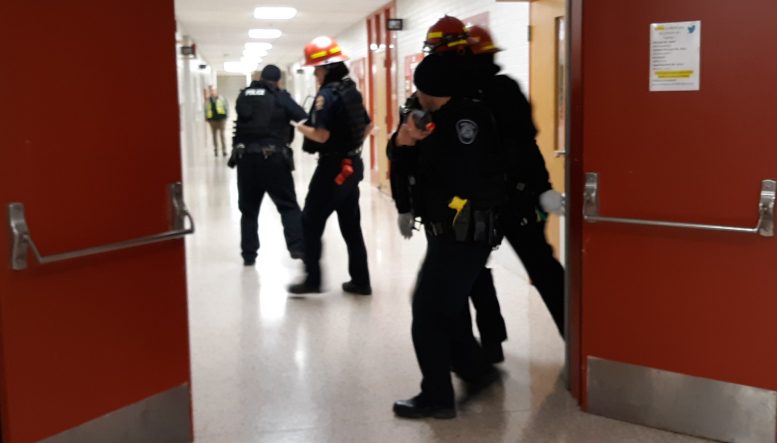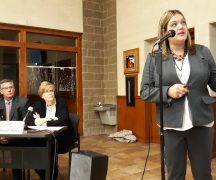By JAN LARSON McLAUGHLIN
BG Independent News
In the wake of the mass shooting at the elementary school in Uvalde, Texas, steps have been taken to ensure local police officers all have access to Bowling Green City School buildings.
Bowling Green Superintendent Francis Scruci reiterated Tuesday evening that he will never recommend that teachers be armed in their classrooms. However, after discussions with Bowling Green Police Chief Tony Hetrick, Scruci said all city police officers now have their own individual key fobs to get into locked schools.
“They can enter any building in case of an emergency,” whether on duty or not, Scruci said during the monthly board of education meeting.
Scruci voiced his confidence in the city police division. Last year when a bomb threat was made at the high school, by the time the superintendent drove from the school administration office downtown to the high school, there were 10 officers on the scene.
“Our officers know if there is a threat, they are going into the schools,” Scruci said.
Scruci talked about other steps already taken for school safety, including the “boots” installed on each classroom door that keep intruders from entering, ballistic shields installed in places with large windows, surveillance cameras, and frequent training.
Bowling Green Police Lt. Adam Skaff said local officers go through regular training on active shooter situations. That training no longer recommends that responding officers wait for members of Special Response Teams to arrive on the scene, he said.
“In the last 15 years the response has changed drastically,” Skaff said. “It’s our policy if there’s an active shooter, we’re going to enter immediately and move toward the threat.”
The issue came up at a Bowling Green City Council meeting last month, when a resident questioned the police division’s former policy of waiting until three officers are on the scene before engaging a shooter.
Hetrick explained that the diamond formation of three officers entering a scene is an old tactic not used since the Columbine shooting more than 20 years ago.
“Our policy is first there, first in. We don’t wait,” the chief said. “The first officer there goes in directly to the shooter, bypassing any distractions, and engages the shooter.”
Bowling Green Mayor Mike Aspacher “categorically rejected” the questioning of the police division’s response protocol during the council meeting. “Our officers are trained rigorously” to deal with violent situations, he said.
“The first officer on the site will confront an active shooter,” Aspacher said.
When Ohio legislators voted last month to allow teachers with minimal training to be armed in schools, Scruci said he will not recommend that the board of education allows guns in classrooms.
“I’m not in favor of arming teachers in the classroom,” he said. “They are there to educate our students. They got into education for students – not to shoot people.”
“I will never recommend to the board that we arm teachers,” Scruci said.
Bowling Green Police Chief Tony Hetrick last month acknowledged that some rural areas of Ohio may find arming teachers an effective method of defending schools. But in places like Bowling Green, where police response is within a few minutes, putting guns in classrooms is not necessary.
Hetrick expressed concern about the limited amount of training required in the bill.
“We continually train because using firearms is a perishable skill,” the chief said. It’s a matter of use it or lose it, he said.
“It’s pretty hard to grasp in a day or two,” Hetrick said. “You don’t become a teacher to carry a firearm. To me it’s two separate skill sets and mindsets.”





